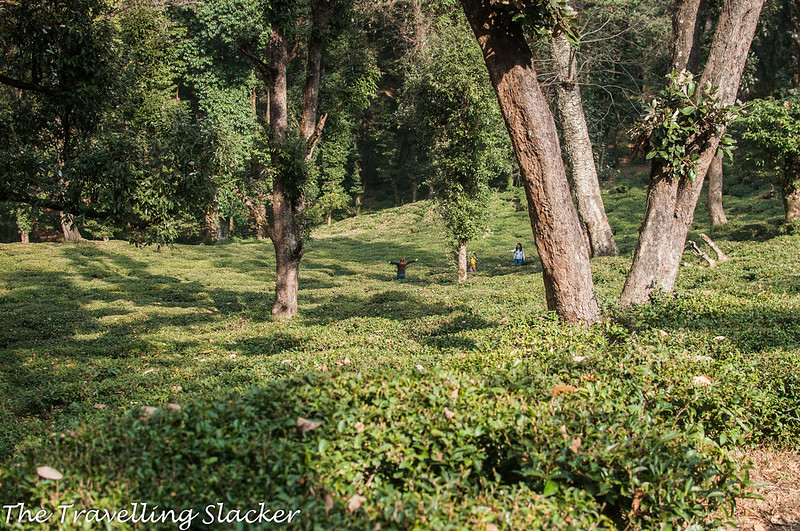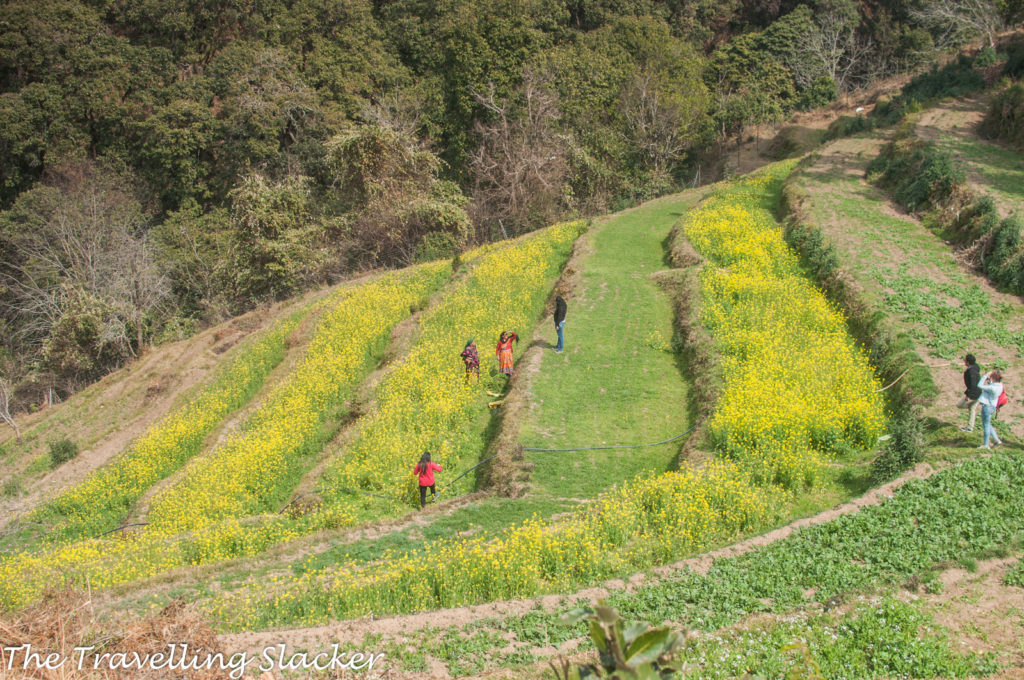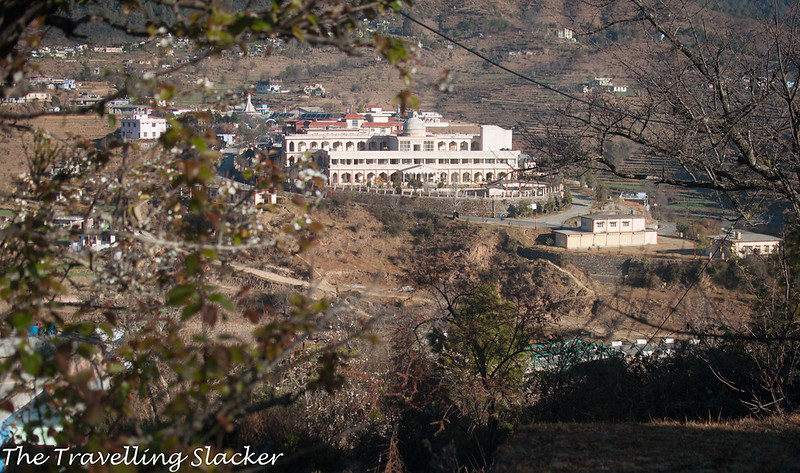Champawat is a place that does not easily ring a bell, which is surprising because it used to be the capital of Kumaon Kingdom, an ancient town with mythological associations as well as archaeological remains. When I first saw the invitation to visit the place, I had to think hard and finally remembered a Corbett story called the Champawat tiger. Apart from that, I could hardly find anything about the place. This is because this Tanakpur-Champawat-Pithoragarh route is the easternmost and least visited part of Kumaon. It is not far from the Nepal border and feels a bit different compared to the rest of the state. Anyway, this is why I accepted this opportunity to visit and explored the place.
So, I was at Pushkar when the plan was finalized. I had to reach Ajmer to catch the Ranikhet Express to reach Rudrapur at an unearthly hour of 3 AM. However, things were not simple. I got down at 3 AM only to realize that I had left my phone on the train (I was half-asleep). I jumped back into another compartment of the train that had started to leave the station. I walked through the train to reach my seat just at the right time when the caretaker was cleaning up my place and wondering what to do with that phone.
Anyway, they gave it back to me but the train was already moving at full speed by then and so I had to wait for another 30 mins and reached some other station near Pantnagar around 4 AM! It was still dark as I came out of the station and there was barely anyone. I walked around checking the map and finally found a shared car with no space inside. It was taking some people to work back to Rudrapur. SO, I kept my bag inside dangled from the backside. It was still dark and chilly that February morning but I enjoyed this ride and got back to Rudrapur by 5 AM and then found a bus to Tanakpur, from where I found a shared car to Champawat. At around 10 AM, I was 15 KMs away from my destination.
All this while I had been battling flu-like symptoms and I was not sure what exactly was happening to me. All I knew was that I will need a good siesta once I reach. However, the traffic came to a standstill after that point. A large rock had fallen from the top and positioned it miraculously on the road, instead of tumbling down further. Hundreds of vehicles had gathered at that point on both sides of the rock. For the next 8 hours, all I could do was to watch the excavators work tirelessly to dig out a road bypassing the rock because it was too big to move. I have been in trickier situations such as when I got stuck at 4400 meters and when I had to spend a lonely night at the jungle but combined with illness, it turned out to be a serious ordeal that day. Anyway, the road finally cleared at around 6 pm and I reached Champawat by 7 pm, and had to go directly to attend a meeting, which was a part of the program I was invited to attend. It was followed by dinner and I could finally retire for the day only after 11 PM!
So, within less than 24 hours, partly due to circumstances and partly due to my own mistakes, I had become familiar with every major point in the easternmost part of Lower Kumaon bordering Nepal, which still remains somewhat detached from the regular tourist circuits.
So, the primary thrust of me being here was an event organized by NGOs International Centre for Sustainable Development and The Dais Foundation, primarily managed by youngsters. But it was good to see that they had full support of the district administration in the process. The scope of the discussion was not limited to tourism but covered everything from education to agriculture. However, since I was there as a travel writer, I am focusing on the tourism part. I hope this will bridge the information gap that exists right now between Champawat and its potential visitors.
Champawat Town


Desmond’s Farm and Tea Garden Hike






Baleshwar Temple and other archaeological remains










Abbott Mount and Mayavati Ashram

Abbott Mount is around 7-8 Kms ahead of Lohaghat, followed by a short hike to the hilltop. The primary attraction here is the great 360 degree view of the snowy peaks that it provides on a clear day. Sadly, that also means that it is completely dependent on the weather. The day I went was a strange day. It was a sunny day but the sky was dull and somewhat hazy. Not a single peak was visible in the horizon. Maybe this is why the dry and dusty spring is considered off-season in these parts. Apart from the peaks, Abbott Mount has a few graves and a piratically abandoned church that can help conspiracy theorists to concoct one of those haunted house stories. Actually, the place is named so because of the Abbott family who tried to settle here. They are the ones who now rest under those graves.
We returned to Lohaghat quickly, by taking a lift on a truck. Mayawati Ashram is around 8 KMs but there was no public transport available. We finally hired a guy, who ran a garage by the side of the road, to take us there and drop us back. He charged INR 400. I would not have done it alone but it got divided between three people so it was tolerable. It was a nice drive through pine and rhododendron forests and we reached in quick time. This Ashram was envisioned by Swami Vivekananda and built by a couple of British disciples of his. It is a beautiful compound but sadly photography is not allowed inside. We met Swami Narasimhananda, who is the editor of the magazine published from here. In fact, this has been a major publishing center for more than a century now. We also saw an old printing machine that has been preserved for everyone to see. We had a good conversation with Swamiji. Somehow he asked if I was a blogger (no one in my family has ever got that right). So, I guess the power of spirituality is not to be underestimated.
So, I spent around 5 days in Champawat and then left for Pithoragarh, which is higher up in the mountains. I am aware of the confusing tone of this article but that was because I was trying to cover several aspects of the place. The conference of sustainability is a good initiative and I hope they continue the work. What I could understand is that this region, just like most other Himalayan regions, is a fertile stretch with a lot of potential in terms of agribusinesses and tourism. As of now, not too many people are visiting it but I can see that improving in the next few years. One thing that can help this process is better availability of information, and the development of affordable homestays in various strategic parts of the region. I don’t know about the latter but I can take care of the former through this guide below.
Champawat DIY Travel Guide
How to reach Champawat?
Where to stay in Champawat?
What to see in Champawat?
Phone and data connectivity in Champawat?
Should I carry my Old Monk?
Where to go after Champawat?












Nice to read about Champawat, Amazing place .
Very informative post. Thanks a lot for pics.
Wow, your journey to Champawat really was an ordeal, I would have struggled even if I was not ill let alone with a touch of the flu. Enjoyed reading about the Uttarakhand Sustainable Development Festival, and that it covered everything from agriculture to tourism to education. Champawat is not a place I would have thought to visit but looks like you had a really interesting experience and I know I would enjoy visiting tea and fruit farms in particular.
A hike through the tea garden and a delicious meal of pancakes and fruits afterward sounds like an amazing way to spend the day and at the same time understand the local tea plantation. The temples and the archeological remains looks very interesting too. So cool that you were able to visit some temples on your visit.
Great to know that you were able to visit several interesting sights despite not feeling well on your arrival. 🙂
It’s so interesting to read this today…my mother was actually here two days back with her mother exploring our heritage 🙂 Being a Kumaoni I grew up with stories from Champawat (don’t remember any now) though I visited the place only as a kid years ago. It certainly looked a bit different back then…
Btw love the pictures of the temples…would be really nice to go back and learn more about them!
Getting sick while traveling is never fun, but to have a boulder block your way is crazy. The sculptures at the Baleshwar Temple are gorgeous. It seems like the area is working to improve tourism and I think that over time they will because it looks like a great place to visit.
Even after your slow start, Champawat looks like an incredible place to see. Baleshwar Temple is a highlight, but you are right to point out how remote and difficult some of these places can be especially if a boulder lands in your way! I love the idea of a hike through the tea gardens!
This is such a lovely discovery. I loved the small town feel with all those terrace farms and the rhododendrons. However, it is the heritage part that got me intrigued. Such amazing art and in a fairly decent state. I can see how this place must have helped you recover from the bad health and start you had. Beautiful write up and pictures .
Now this sounds like an adventure. I’ve never had a giant boulder block my road before. That’s insane! I would love to see Baleshwar Temple myself. I’m a huge fan of both nature and temples. What a remote and stunning destination.
Your post unveils Champawat and its history as the place is definitely not much known. When I started reading I had a vague memory of having read about it but it did not ring a bell otherwise. But it became a little more clear after reading about the Corbett connection. I never knew that Champawat was the capital of the Kumaon Kingdom. It is heartening to note that the authorities are taking steps for the sustainable development of the region. I found the old temples really fascinating and hope to get there someday to explore the same.
After reading your post; now I know what I have missed. Champawat looks great and your pictures are amazing. 360 degree views from the hill top will be simply gorgeous. Boy you really had a tough time reaching there.
I have never heard of Champawat and I was actually living in Uttrakhand for a couple of years when my dad was in the Indian Armed Forces. It does sound like it would’ve been a great place to visit. The tea gardens, the farms, the temples and archaeological remains, they all look absolutely lovely! Thanks for this informative post, I’ve learned about a new place today!
Pingback: Mirthless in Munsiyari | The Travelling Slacker
Pingback: Pithoragarh: Travelogue and Travel Guide | The Travelling Slacker
Pingback: Kasar Devi: Travel Guide to Hippie Hub of Kumaon | The Travelling Slacker